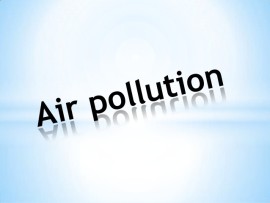- Home
- Editorial
- News
- Practice Guidelines
- Anesthesiology Guidelines
- Cancer Guidelines
- Cardiac Sciences Guidelines
- Critical Care Guidelines
- Dentistry Guidelines
- Dermatology Guidelines
- Diabetes and Endo Guidelines
- Diagnostics Guidelines
- ENT Guidelines
- Featured Practice Guidelines
- Gastroenterology Guidelines
- Geriatrics Guidelines
- Medicine Guidelines
- Nephrology Guidelines
- Neurosciences Guidelines
- Obs and Gynae Guidelines
- Ophthalmology Guidelines
- Orthopaedics Guidelines
- Paediatrics Guidelines
- Psychiatry Guidelines
- Pulmonology Guidelines
- Radiology Guidelines
- Surgery Guidelines
- Urology Guidelines
Pollution and winter season definitely linked to increased PCI rates, finds study

Heavily polluted areas have a higher rate of angioplasty procedures to treat blocked arteries than areas with clean air, according to research to be presented at European Society of Cardiology Congress 2019 together with the World Congress of Cardiology. (1) Procedures are even more common in winter, the most polluted time of year.
Study author Dr Rafal Januszek of the University Hospital in Krakow, Poland said: “Epidemiological studies have reported negative impacts of pollution on the cardiovascular system but the effects on specific diseases were unclear. We also show for the first time that patients from areas with cleaner air are more sensitive to changes in pollution, while those from more polluted cities can adapt to fluctuations.”
Using particulate matter (PM) 10 levels published by the Chief Inspectorate for Environmental Protection in Poland, six unpolluted cities and five polluted cities were selected for the study. PM10 are particles ten micrometres or less in diameter. Sources include industrial processes like iron making and quarrying, lawn mowing, wood and coal stoves, bushfires, dust storms, and vehicle exhaust emissions.
The study enrolled 5,648 patients from unpolluted cities and 10,239 patients from polluted cities. All patients underwent stent insertion (percutaneous coronary intervention; PCI) to open arteries blocked due to acute coronary syndromes (heart attack or unstable angina). PCI data were obtained from the ORPKI Polish National PCI Registry.
Dates of Percutaneous Coronary Intervention procedures were matched with air quality on the same day during a 52-week period. Analyses were also performed to compare winter versus non-winter weeks because pollution levels rise during winter.
The annual average PM10 concentration was significantly higher in polluted cities (50.95 µg/m3) compared to unpolluted cities (26.62 µg/m3). In both polluted and unpolluted areas, a rise in PM10 concentration was significantly associated with a greater frequency of PCI.
Patients in cities with clean air were more sensitive to pollution rises, with each 1 µg/m3 increase in PM10 concentration linked to 0.22 additional PCIs per week. While in polluted cities, the same rise in PM10 was linked with just 0.18 additional PCIs per week.
Regarding the seasonal effect, the Percutaneous Coronary Intervention rate was significantly lower in non-winter, compared to winter, weeks in both polluted and clean cities. “The higher incidence of PCI in winter is related to greater air pollution during this period,” said Dr Januszek. “This is due to several factors such as artificial heating and the resulting smog.”
He concluded: “The study shows that the incidence of acute coronary syndromes treated with PCI was higher in winter and rose along with increasing pollution, and this rise was higher in regions with initially cleaner air, if taking the same increment in pollution into account. This is further evidence that more needs to be done to lower pollution levels and protect the public’s health.”

Disclaimer: This site is primarily intended for healthcare professionals. Any content/information on this website does not replace the advice of medical and/or health professionals and should not be construed as medical/diagnostic advice/endorsement or prescription. Use of this site is subject to our terms of use, privacy policy, advertisement policy. © 2020 Minerva Medical Treatment Pvt Ltd